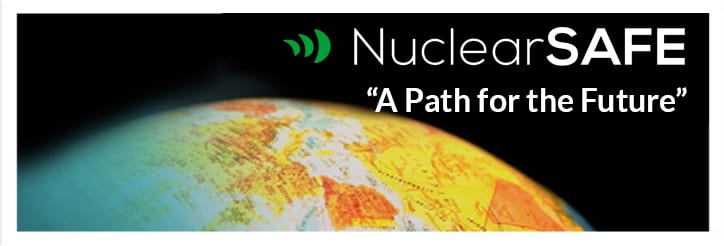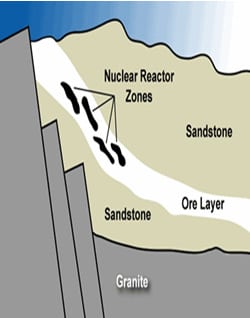

NATURAL REPOSITORIES
PROVIDE EVIDENCE OF
LONG TERM VIABILITY
- SEVERAL LOCATIONS HAVE BEEN IDENTIFIED WHERE NATURALLY OCCURING RADIOISOTOPES HAVE BEEN IDENTIFIED AND CRITICALLY ANALYSED
- THESE NATURAL REPOSITORIES HAVE SHOWN NO NEGATIVE ENVIRONMENTAL CONSEQUENCES OVER GEOLOGIC TIME

NATURAL REPOSITORIES
PROVIDE EVIDENCE OF
LONG TERM VIABILITY

OKLO – GABON, WEST AFRICA
There is strong geochemical evidence that the Oklo uranium deposit behaved as a natural nuclear fission reactor in Precambrian times: Geologists found that it had been in a reactor before — two billion years ago.
The radioactive elements did not migrate out of the local area.
NATURAL REPOSITORIES
MORRO DO FERRO –
BRAZIL
30,000 TONS THORIUM
100,000 TONS OF RARE EARTH ELEMENTS
NO MEASURABLE MIGRATION OF RADIOACTIVE MATERIAL AWAY FROM SITE
KOONGARRA –
AUSTRALIA
MAJOR URANIUN ORE DEPOSIT WITH
GROUNDWATER
FLOWING THROUGH
THE DEPOSITS
NO MEASURABLE
MIGRATION OF
RADIOACTIVE
MATERIAL AWAY
FROM SITE
